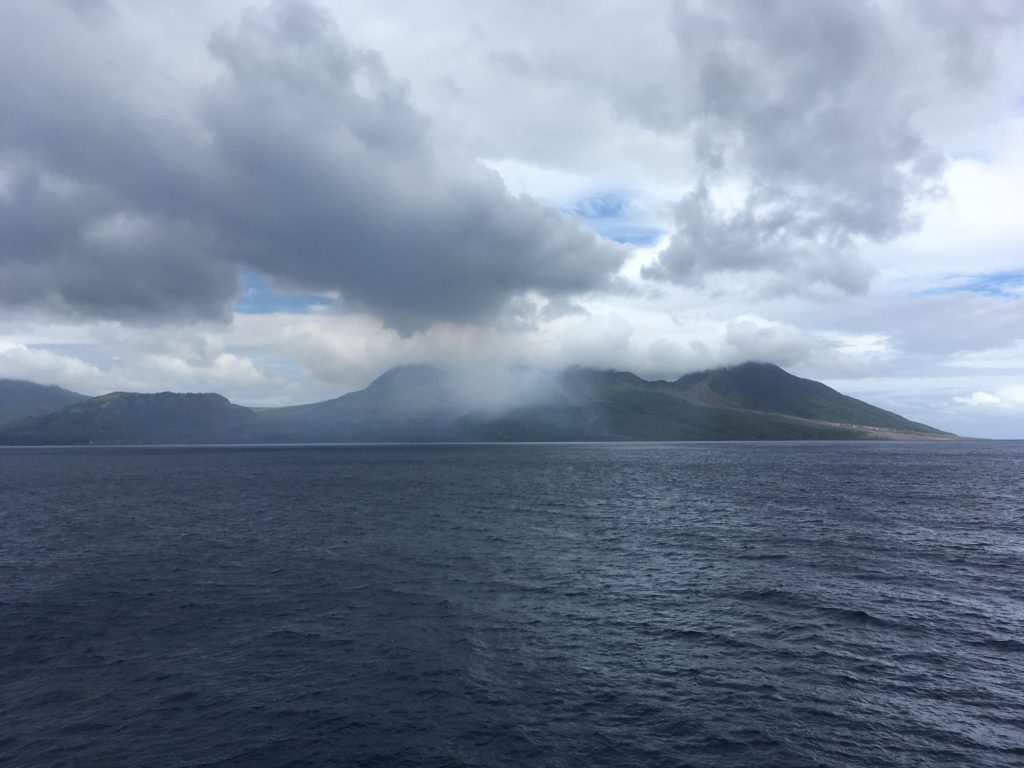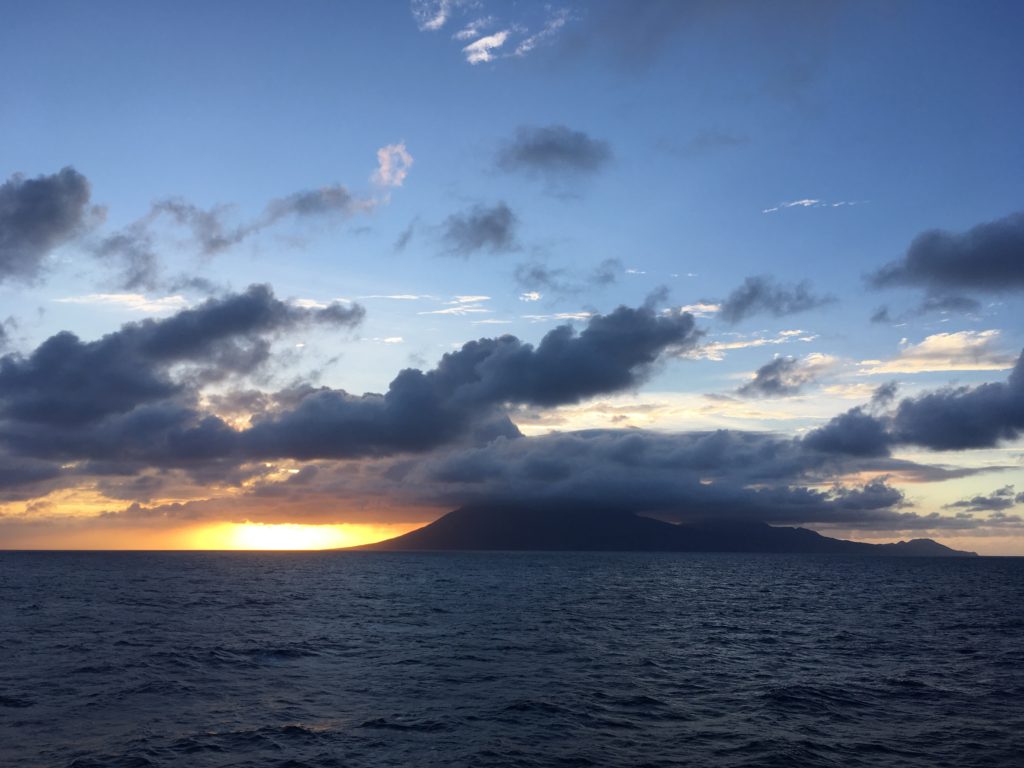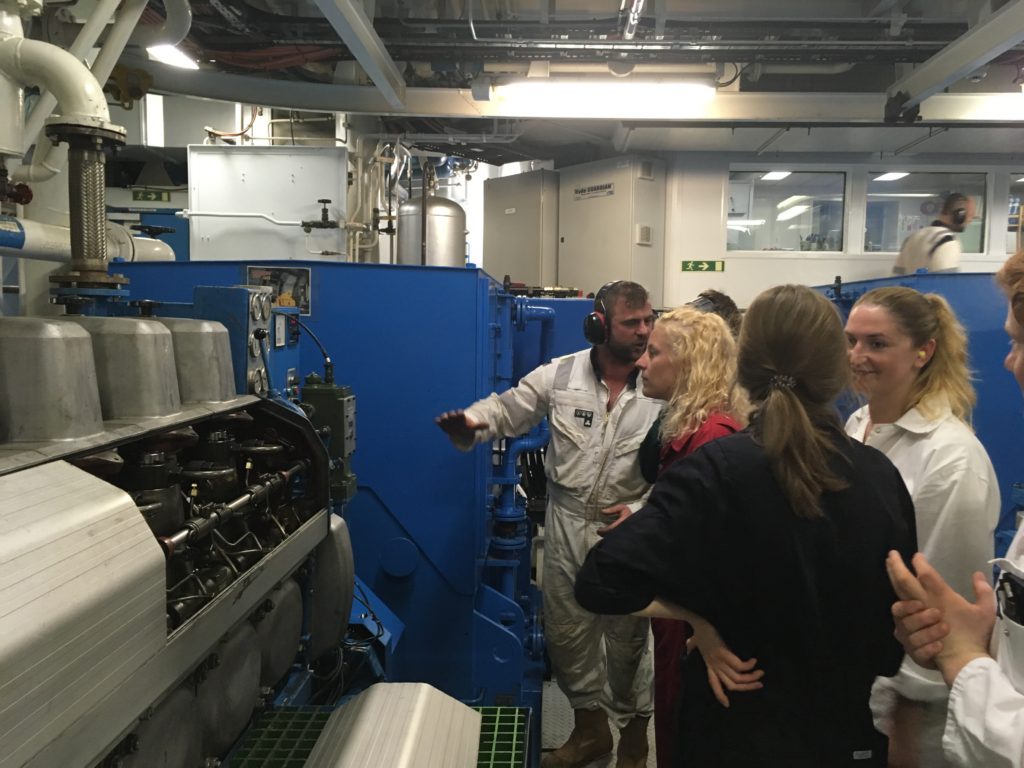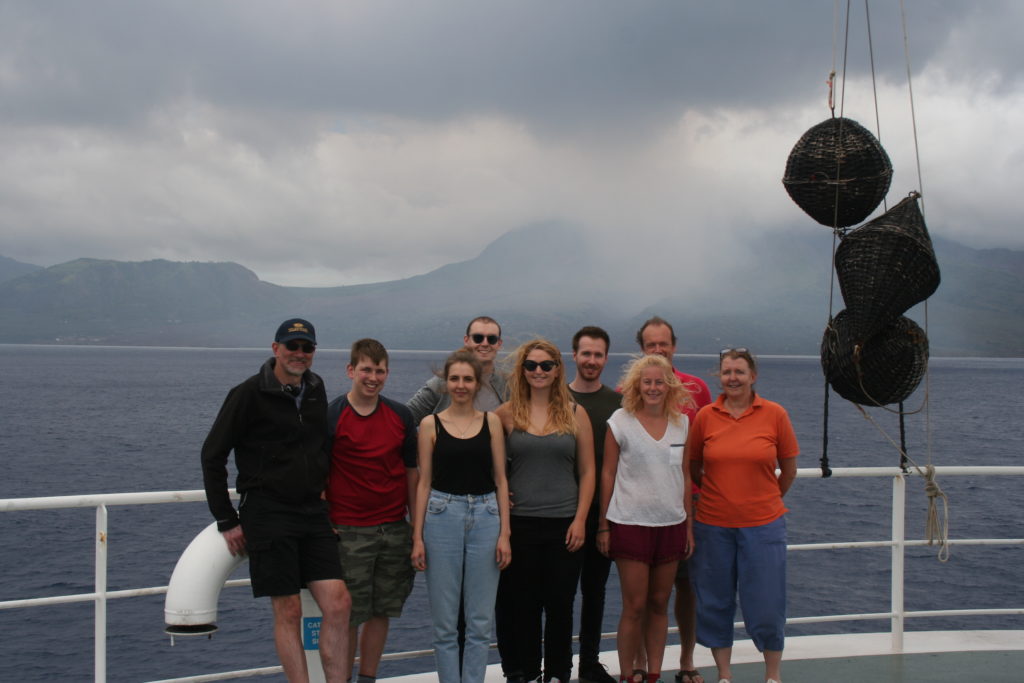The leg-end of Montserrat
Ben Chichester
Safe to say, #JC149 Leg 1 has been a blast.
Traveling back up north along the back-arc region of the subduction zone, a couple of the airguns finally gave out. No cause for huge alarm though, some failure seems to have been expected and overall the first leg was considered to be a great success! We even had a day spare at the end and managed to squeeze in an extra stint of firing the guns. This extra seismic line went across-arc south of Montserrat.

With time to spare, captain was fine with us getting up close and personal with a very gassy Soufrière Hills. In 1995 Montserrat’s volcano began to erupt. The eruption is ongoing and has released vast pyroclastic flows and the ‘hills’ experienced a considerable collapse. The lava, now solidified, is easily visible from the ship, and has eaten a devastating portion of the coastal town at the volcano’s base. We spent hours parked a couple of miles offshore, basking in the sulphurous air. The eggcellence didn’t stop us spending a lot of that time with the binocs on JC’s foredeck though, trying to find the church spire that is apparently poking out from the flow. Crew that were unaware of our incredible interest in the island would ask us a number of times which new island we’re going past now. Uh..still Montserrat….

An engine room tour was arranged for us students. It was loud and stiflingly warm, but very interesting to see the Cook’s innards. Also included in our tour was a good look at the sewage and water handling. We were slightly gullible during this part so showering was rather depressing the following day for a couple of us..

With the end of leg 1, it’s farewell to four of the science party (mates it’s been amaze) and hello to the new squids. Leg 2 has begun, which lasts 10 days and involves collecting 34 ocean bottom seismometers that were placed around a large extent of the Lesser Antilles about 15 months ago, from Grenada to Saint Kitts and Nevis. We’ll keep you updated with lots of OBS related fun! Wish us luck.
